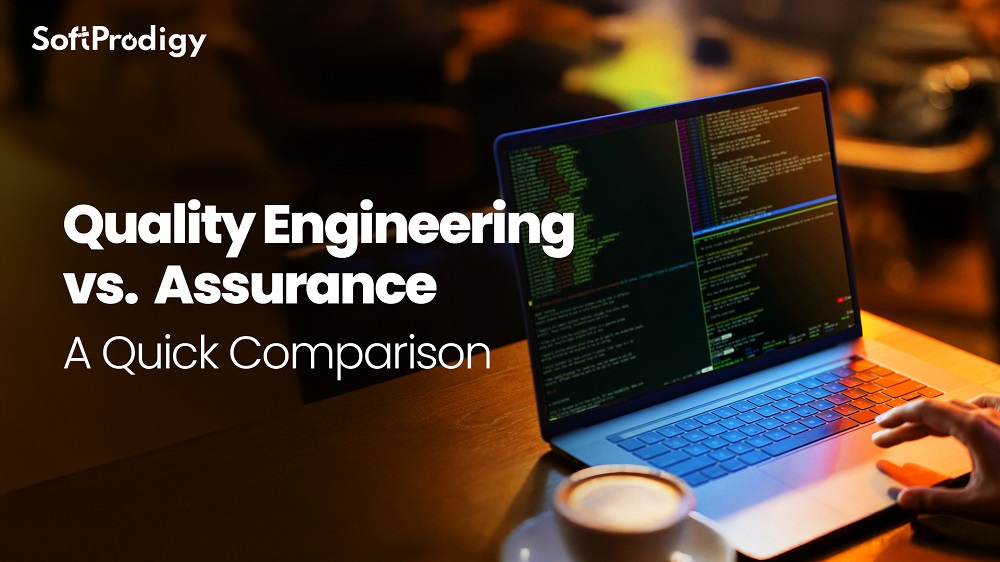Agentic AI is reshaping financial services. It empowers systems to make autonomous, intelligent decisions faster. This capability drives efficiency and innovation across finance. In this blog, discover what agentic AI is, its benefits, how CFOs can implement it and pitfalls to avoid. Level up your financial functions with cutting-edge technologies.
Read on to unlock strategic advantage with agentic AI.
What Is Agentic AI in Finance?
Agentic artificial intelligence refers to systems that perceive, plan and act autonomously to achieve financial goals. Unlike simple automation, these agents don’t just run fixed rules. They interpret data, adapt to new information, and engage with workflows independently.
In finance, this means an agent can spot a cash variance, decide to move funds and execute the payment without human intervention. Financial services firms are already exploring these tools to support treasury, risk, compliance and customer operations.
Points to remember:
- Capable of goal-driven operations, not just scripted responses.
- Uses live data, triggers, tool integration, and continuous feedback loops.
- Designed for high-impact domains like treasury, risk, and accounting.
This isn’t hype. The underlying shift is that finance functions, once locked in cycles of manual work, are opening to autonomous workflows. And agentic AI is the key.
How Agentic AI Is Transforming Financial Services?

- Agentic AI is shifting finance from slow cycles to live operations: Agentic AI helps financial institutions move away from delayed processing toward a more continuous and responsive model.These agents understand context, read live data and take timely action when patterns shift. This gives financial teams fresher insights and reduces the long wait times that once controlled key decisions. Institutions no longer rely on static reports because they receive information that updates constantly and supports immediate action.
- Wealth teams receive sharper insights and deliver faster guidance: Agentic systems watch portfolio behaviour, detect subtle movements and share insights with remarkable speed. Advisors receive clearer signals and can take actions that feel timely and relevant.
Clients appreciate this approach because they get guidance that responds to market conditions rather than old summaries. The advisor gains confidence because the agent explains each recommendation, which strengthens the trust needed in wealth conversations and long-term relationships. - Payments and risk teams gain stronger protection against unusual activity: Agents monitor payment flows and react when transactions look suspicious. They start the review process, gather the needed details and alert the right teams. This prevents delays that often risk team operations.
Previous rule-based tools struggled in complex situations because they could not interpret new patterns. Agentic systems learn from fresh data and adjust their behaviour quickly. This helps institutions detect risk early and support compliance consistently across payment operations. - Treasury functions experience real-time liquidity and exposure awareness: Treasury teams once depended on delayed and static reports. Agentic AI replaces this with active monitoring that surfaces liquidity changes as they happen.
Teams see exposures, shifts and opportunities throughout the day, not just at closing times. Executives make more confident decisions because the information is current. This changes the entire rhythm of treasury management because leaders finally operate with visibility that supports strategic action rather than reactive corrections. - Customer operations become smoother and far more responsive for users: Agentic agents handle routine requests, review documents and direct complex issues to human experts. Customers no longer wait for slow verification cycles or unclear responses.
The experience feels more fluid because actions move quickly and errors reduce naturally. Service teams feel relief because they focus on meaningful issues rather than repetitive tasks. Institutions gain stronger customer satisfaction and fewer escalations, which helps maintain loyalty in competitive financial markets. - Institutions gain efficiency, accuracy and a more strategic operating model: As agentic systems take over predictable tasks, teams experience cleaner workflows and fewer delays. Mistakes drop because agents follow consistent rules supported by real-time data. Leaders focus more on long-term plans because they deal with fewer operational fires.
Oversight remains strong through transparent logs and checkpoints. This balance of autonomy and control helps institutions shift from reactive activity toward a more strategic and confident approach across all financial services functions.
Benefits of Agentic AI in Finance

Agentic AI delivers numerous benefits from operational efficiency to strategic advantage. Here are key ways it empowers financial services:
- Improved Productivity: AI agents automate repetitive tasks, speeding workflows. Teams focus on high-impact work.
- Enhanced Accuracy: Automation reduces errors in transactions and reporting. This improves compliance and trust.
- Proactive Risk Management: Agentic AI monitors data continuously. It flags risks and suggests preventative actions.
- Better Customer Experience: Personalization through AI creates relevant offerings and support. Customers stay engaged.
- New Revenue Streams: Innovative AI solutions open doors for financial products and services tailored to market needs.
Leading vendors like Edge Marketplace offer agentic AI tools with proven production use. Businesses see measurable ROI and competitive differentiation.
Agentic AI in Treasury: The Three Pillars of Autonomous Finance
Treasury functions are ripe for disruption. They sit on structured data, repetitive processes and high stakes. With agentic AI, three pillars emerge:
1. Real-time cash intelligence: Agents monitor liquidity, movements and exposures constantly. Instead of waiting for day-end reports, treasury sees issues as they appear and acts immediately.
2. Autonomous operations: Think reconciliation, payment execution, and forecasting. Agents run workflows previously done by teams. They reduce error, speed up cycles and free up treasury to focus on decision-making.
3. Hyper-personalized financial guidance: Treasury used to serve the business in a reactive mode. With agentic AI, CFOs and business units receive tailored insights: “Move excess cash here”, “hedge this risk”, “optimize this payment run”. The AI agent becomes an internal advisor.
Agentic AI vs. Generative AI in Finance: How Each Transforms Modern Finance?
Agentic AI and generative AI serve different purposes in finance. Generative AI creates content like reports or customer responses. Agentic AI goes further. It autonomously takes actions based on goals. For example, agentic AI can approve loans or manage portfolios. Generative AI supports creativity and communication. Together, they build a powerful AI ecosystem.
Related Read: Generative AI in Financial Services: Benefits & Examples
Here’s a sharp comparison table to clarify:
| Capability | Generative AI | Agentic AI |
|---|---|---|
| Primary output | Content (text, images) | Actions (tasks, workflows) |
| Dependence | Prompt-based | Goal-oriented |
| Human role | Provide prompt, review output | Provide oversight, exceptions |
| Finance example | Chatbot summarizing report | Agent reconciling, remediating variance |
In short: generative AI answers your questions. Agentic AI acts on them. That difference makes all the operational and strategic impact.
Why Should CFOs Care About Agentic AI in Finance?
CFOs hold the key to financial innovation and governance. Agentic AI offers them a significant edge. It transforms how finance teams operate by boosting efficiency and insight. CFOs can reduce costs while improving accuracy and speed. This supports better decision-making and strategic planning.
Agentic AI enhances risk management by detecting issues early. It ensures compliance with evolving regulations. CFOs who adopt AI gain a competitive advantage. They also foster a data-driven culture, empowering teams to innovate continuously.
Ignoring agentic AI risks falling behind peers using its capabilities. CFOs must act now to secure their organizations’ future.
How CFOs Can Implement Responsible AI Finance Agents?
1. Assess Current Processes: Identify manual and repetitive finance workflows suitable for AI automation.
2. Set Clear Goals: Define objectives like improving accuracy, reducing costs, or accelerating reporting.
3. Choose the Right AI Tools: Evaluate vendors offering agentic AI aligned with your business needs.
4. Pilot and Test: Implement AI agents in a controlled environment. Measure performance and risks.
5. Train Teams: Equip finance professionals with skills to collaborate with AI systems.
6. Scale and Optimize: Roll out AI broadly. Use insights to continually enhance finance operations.
CFOs following this plan can smoothly adopt agentic AI, unlocking its full potential for their organizations.
How Can Agentic AI Workflows Revolutionize Accounting and FP&A?
Agentic workflows bring autonomy and intelligence to core accounting and financial planning processes. These AI-driven workflows automate repetitive tasks and orchestrate data flows. It enhances decision-making and also pushes efficiency and accuracy to new levels.
Month-end close automation is one of the most valuable uses. AI agents handle reconciliations, validate entries, and generate compliance-ready reports without manual intervention. They quickly scan ledgers and flag anomalies, reducing close times by up to 50%. With fewer bottlenecks, teams focus on strategic analysis and forecasting.
Continuous forecasting is another advantage of agentic AI. Now, financial planning and analysis (FP&A) teams use live data streams instead of static, periodic updates. AI agents pull from ERP, sales, and market data, generating rolling forecasts that adapt to real-time changes. This means leaders spot trends and address risks far sooner.
Predictive reconciliations further streamline accounting work. Instead of retroactive fixes, agentic workflows use machine learning to match transactions, identify exceptions, and resolve discrepancies as they happen. This proactive approach catches issues early and maintains clean records.
Exception-handling agents automate workflows for outliers and edge cases. When transactions fall outside expected patterns, AI agents manage approvals, gather supporting documentation, and support compliance reviews. These digital agents free up skilled accountants for higher-value work and ensure nothing slips through the cracks.
Companies using agentic workflows in accounting and FP&A see faster closes, real-time insights, and improved audit readiness. This future-focused approach builds trust with stakeholders while helping finance teams deliver more value every day.
How can Banks Agentify their Operations?
Banks can agentify their operations by shifting from static workflows toward systems that act with purpose. The first move is selecting processes that benefit from autonomy.
- Banks begin by choosing workflows that gain value from autonomous systems: Most banks start with KYC reviews or AML checks because these areas deal with structured information and repetitive decisions. Agents scan documents, verify essential details and send unclear items to analysts.
This reduces delays and helps compliance teams maintain accuracy under rising workloads. Early adoption gives banks confidence and prepares their teams for broader use of AI in banking across complex operations. - Clean data helps agents work with clarity and confidence: Banks need strong data foundations before introducing autonomy into sensitive processes. Agents depend on accurate and complete data to handle tasks correctly.
Poor information often leads to confused actions or unexpected escalations. Teams improve data pipelines, confirm key values and maintain reliable lineage rules. These efforts protect agents from mistakes and help banks build safer and more consistent systems powered by AI in financial services. - Workflow design defines how humans and agents collaborate inside the bank.
Banks map each process to decide where agents act and where humans guide. This protects sensitive decisions and prevents compliance gaps.
Agents handle predictable steps while humans review complex or high-risk moments. Clear instructions help teams trust the system and understand how agentic AI in finance and accounting improves accuracy without removing human oversight. - Controlled testing strengthens stability and prepares banks for safe expansion.
Banks test agents in protected environments before full deployment. Analysts observe actions, refine logic and adjust thresholds.
This stage helps teams catch issues early and build trust in autonomous behaviour. Once stable, banks expand toward reconciliation or loan servicing. They maintain clear checkpoints, reliable audit trails and documented decisions. This allows banks to scale agentic AI in finance, investment and operational processes with confidence.
What Are Common Pitfalls When Deploying Agentic AI in Finance?
Deploying agentic AI in finance often appears straightforward, yet many teams encounter avoidable obstacles that weaken results. One growing issue is agentic washing. This happens when organizations or vendors present simple automation as agentic intelligence.
The system may look sophisticated, but it lacks goal-driven behaviour, autonomous planning and adaptive execution. Finance leaders then expect meaningful gains, only to find the technology cannot deliver them.
Real agentic systems must perceive data, plan actions and carry out decisions with minimal prompting and anything less creates unrealistic expectations. Another frequent setback is the data quality trap. Agentic models rely on accurate and timely financial information.
When the data stream contains gaps or inconsistencies, the agent’s judgement drifts. It might trigger unnecessary exceptions or push incorrect reconciliations. Before enabling autonomy, leaders need a disciplined approach to data lineage, integration and governance. Strong data foundations ensure agents act with precision rather than guesswork.
Oversight challenges also emerge. Some teams assume agents can run without structured controls, which introduces compliance risks and audit concerns. Finance workflows still require supervision, approval layers and transparent logs. A safe deployment blends autonomy with accountable checkpoints that support regulatory demands.
Cultural resistance adds another hurdle. Teams sometimes feel uncertain about new roles or new collaboration patterns with agents. Early training and open communication help them understand how agents lighten workloads rather than replace expertise.
Avoiding these pitfalls positions CFOs to capture real value from agentic AI and build a finance function that operates with confidence, accuracy and long-term credibility.
Future Trends and Innovations in Agentic AI for Finance
The future of finance is rapidly evolving, driven by breakthroughs in agentic AI technology. CFOs and finance leaders must embrace these trends to stay competitive in a world demanding speed, accuracy, and strategic insight.
Here’s a fresh look at the key innovations reshaping finance functions today and tomorrow.
 1. From Automation to Autonomous Advisors: Agentic AI is no longer limited to process automation. It is evolving into a strategic advisor that can independently analyze data, forecast trends, and make complex decisions.Imagine AI agents that not only reconcile accounts but suggest optimal investment strategies or budget adjustments in real time. This shift will redefine the CFO’s role, from task management to orchestrating AI-powered decision ecosystems.
1. From Automation to Autonomous Advisors: Agentic AI is no longer limited to process automation. It is evolving into a strategic advisor that can independently analyze data, forecast trends, and make complex decisions.Imagine AI agents that not only reconcile accounts but suggest optimal investment strategies or budget adjustments in real time. This shift will redefine the CFO’s role, from task management to orchestrating AI-powered decision ecosystems.
2. Hyper-Personalization through Context-Aware AI: Future AI agents won’t just handle routine finance tasks. They will deliver hyper-personalized recommendations by understanding the unique context of each business unit, market segment, and customer profile.
This enables tailored financial guidance and risk management that dynamically adapt to changing conditions—boosting agility and customer satisfaction.
3. Real-Time Finance Powered by Continuous Close: The soon-to-be-standard finance operation is the continuous close, where financial data is updated and analyzed in near real time. Agentic AI workflows facilitate this by automating data integration, anomaly detection, and reporting on a rolling basis. As a result, finance teams gain a constant pulse on organizational health and can pivot swiftly.
4. Ethical and Explainable AI Governance: As AI takes on deeper financial roles, transparency will be paramount. Leading organizations will prioritize ethical frameworks, bias mitigation, and explainability tools so AI decisions are understandable and auditable. This fosters trust among stakeholders and ensures regulatory compliance in an increasingly AI-driven environment.
5. Integrated Human-AI Collaboration Models: The future is not AI replacing humans, but humans partnering with intelligent agents. CFOs will build teams where humans provide strategic oversight and guardrails while AI agents execute autonomous operations. This collaboration increases efficiency without sacrificing accountability.
6. Emerging AI-Driven Business Models: Agentic AI will spawn entirely new financial services and operational models. From autonomous trading desks to AI-powered risk advisory firms, the industry landscape will shift dramatically. Early adopters will enjoy first-mover advantages and new revenue streams.
Level Up Your Finance
SoftProdigy empowers finance teams through advanced agentic AI solutions designed for agility, precision and security. Our intelligent agents seamlessly automate end-to-end workflows, from treasury to accounting. It enables scalable efficiency gains.
Get faster financial closes, real-time risk detection, automated compliance monitoring and personalized financial guidance all within a secure platform tailored to your enterprise needs. Softprodigy integrates smoothly with existing systems, supporting a smooth AI adoption journey.
Experience the SoftProdigy difference today. Schedule your personalized demo.
Divya Chakraborty is the COO and Director at SoftProdigy, driving digital transformation with AI and Agile. She partners with AWS and Azure, empowers teams, and champions innovation for business growth.








